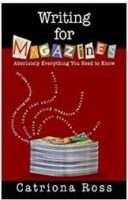STEP 6: Cover the reporting basics. You need to tell the reader upfront who, what, why, where, when and how (known as the ‘5 w’s and h of journalism’.) By the beginning of the third paragraph – but actually the sooner, the better – this information should have been effortlessly absorbed, and the reader should know exactly what your article is about.
The middle…
STEP 7: Develop your first point. Your first couple of paragraphs grab the reader’s attention and introduce the central idea of the story. Paragraph two, and successive paragraphs, should develop the idea. The body of your article is the meat of your story. Ask yourself, ‘What am I trying to say in this feature?’ and answer it in the body, following a logical structure.
Elaborate in the following ways:
* Introduce case studies to illustrate the point you’ve made.
* Bring in research to highlight points. Use well-researched facts and startling or revealing statistics. Make sure the research you use is recent and endorsed by a reputable institution.
* Quote experts from relevant fields.
* Don’t try to cram all the facts in. You won’t have space. Keeping a clear head, try to include only those facts relevant to your article’s central theme, and either exclude the rest or relegate them to breakout boxes and sidebars.
STEP 8: Group related ideas into paragraphs. When you introduce a new aspect or point, start a new paragraph. (Stylistically, most magazines prefer you to do this by starting a new line with an indent, using your tab key. Don’t separate paragraphs with line breaks.) And keep your paragraphs shorter rather than longer.
STEP 9: Link your paragraphs. Your argument needs to follow a logical, easy-to-read progression. Make sure each paragraph flows to the next in a smooth, seamless, sensible way, gradually developing the theme as the article progresses. You may need to shuffle paragraphs around a bit, and break them up and reassemble them, until you get the flow just right.
Watch this neat paragraph shift:
‘Dr Barbara Walker, an Ohio sports psychologist and seven-time marathoner, advises keeping mantras as simple as possible. “Repeating two words can become part of the rhythm of the run,” she says. Walker often uses “tall and strong” and “light and focused”.
This short-and-sweet approach works well for Deena Kastor, who holds the US women’s marathon record. When she ran her best 15-K in Jacksonville, Florida, in March 2003 (47:15, setting the US record), she thought “extend yourself” throughout the race.’ (The paragraph continues.)
From ‘Choice Words’ by Gigi Douban, Runner’s World
The end…
STEP 10: Draw a conclusion. Now don’t put on your tracksuit pants and relax just because you’re almost at the end. Your last paragraph is important: it’s where you sum up your argument and leave the reader with something to reflect on. An ending should be strong and memorable, possibly even provoking your reader to take action. What did your article title, blurb and first paragraph promise to do? Go back to that, and make sure your ending either reinforces your initial point, or answers the question you originally posed.
Try these techniques:
Pebble in a pond. Think of the way the rings spread outward. Show how the issue or idea in your article has broader implications and relates to global trends.
Go full circle. In your conclusion, hark back to an incident, person, quote or concept introduced in your first paragraph – this time, with new insight and meaning.
Bring it home. End off with a personal question or message, perhaps phrased in the second person, so your reader is left considering how the issue affects his or her own life.
Say it again. Use a reworded repetition or pithy summary of your original promise or concept.
Ask a provocative rhetorical question – in other words, one to which the answer is obvious to the reader.
Save a great quote for last.
Bring in a brilliant anecdote that sums up your story.
Leave the reader with a profound single thought or new point.
Sample these final paragraphs:
‘Indeed, Walker says to treat a mantra like a pair of running shoes. “You wouldn’t wear them in a race without breaking them in,” she says. “In the same way, it’s important to take a potential mantra on a test run.” If you feel silly saying it or it doesn’t inspire you, then it probably won’t work.’
From ‘Choice Words’ by Gigi Douban, Runner’s World
‘But because we’re the generation of the quick fix, people reach for a pill to make life easier. And the drugs do work; they help us cope. But they don’t do the work for us: they don’t teach us who we are and what we truly want from life. To feel safe and secure even when change takes us out of our comfort zone – these are the things we need to find out. And only then can we embrace the truth: that life is complex, and we aren’t meant to be happy all the time.’
From ‘Are You Really Depressed?’ By Georgia Black, Marie Claire
‘Bekker, nevertheless, sees positives in celebrities flocking to treatment. With the shame and stigma attached to rehab, she feels it benefits us to see famous faces going for treatment. “I think rehab’s bigger than them,” she says. So, thanks for your efforts, Isaiah, Ashley, Britney, Kate, Mel, Lindsay, Robbie…’
From ‘Rehab: Every Celeb’s Last (Five-Star) Resort’ by Catriona Ross, Cosmopolitan
Step 11: Do two final read-throughs. Copy you supply should be 100% clean – no punctuation, spelling or grammatical errors whatsoever. Check all the names and facts before sending your story off. Just think, if you misspell a name, a features editor will immediately think, ‘Hmm, I wonder what else this writer’s got wrong…’

